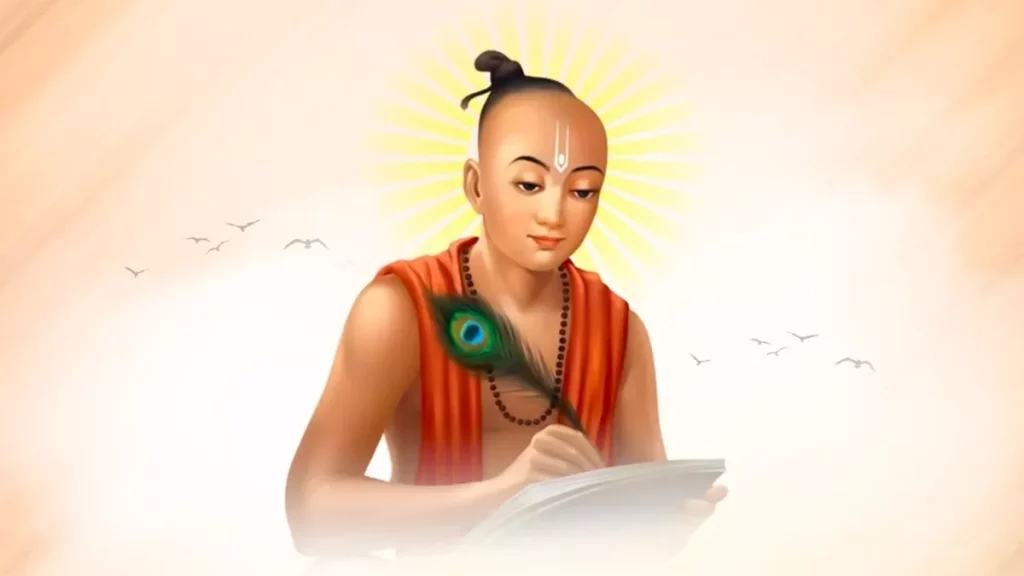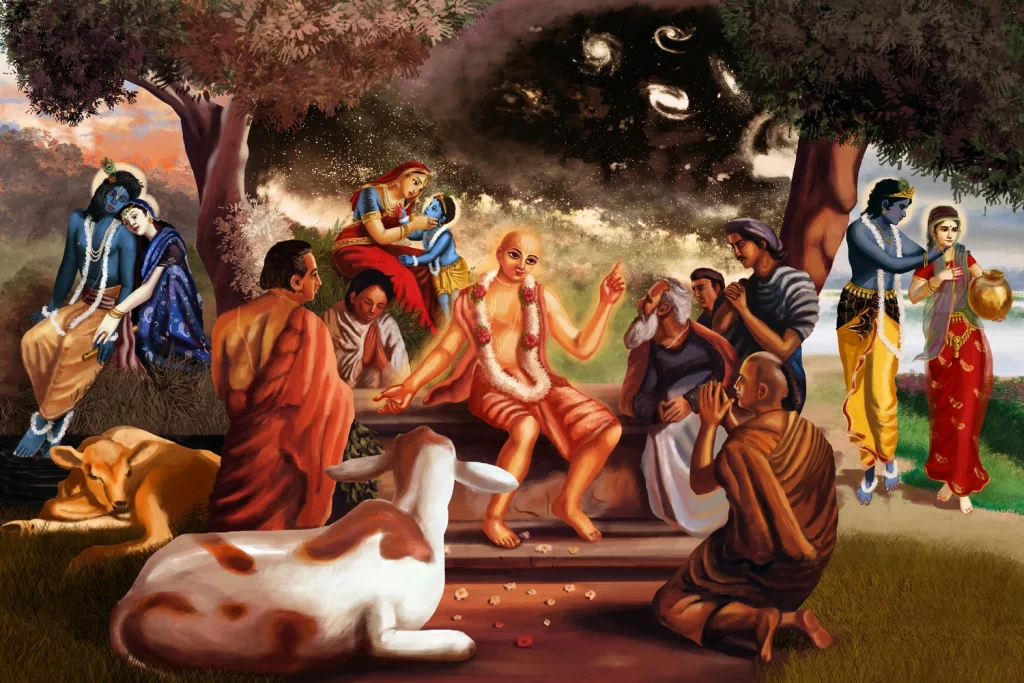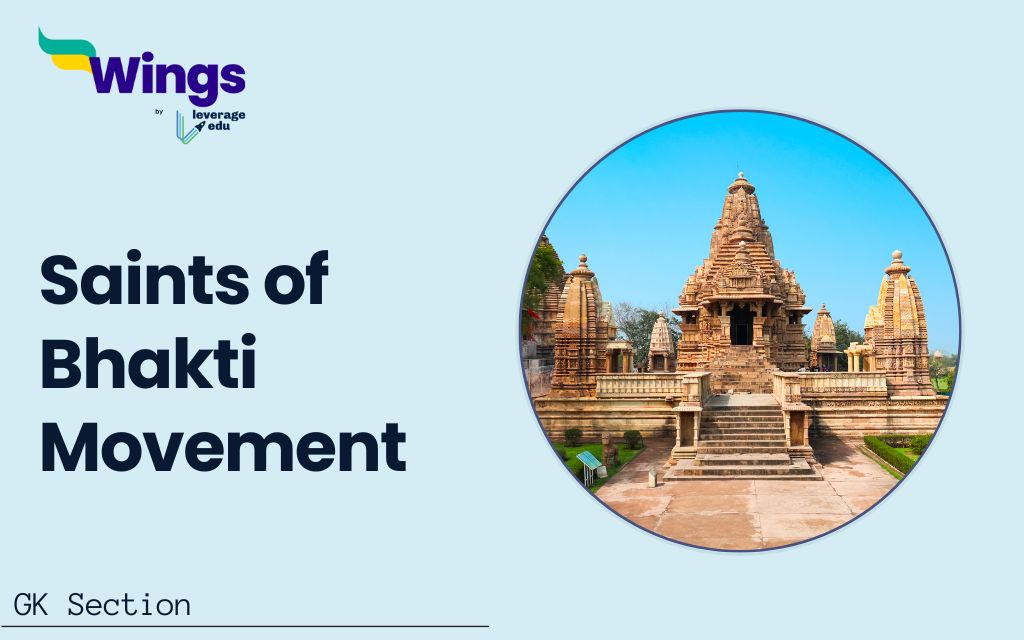‘Bhakti’ means devotion to the supreme being. Bhakti is found in a variety of practices, faiths, and movements. Many saints participated in and contributed to the Bhakti movement. These saints promoted devotion to God, regardless of caste or background. In this section, we shall discuss the saints of the Bhakti Movement who inspired the movement’s goals through their actions. Learning about the saints of the Bhakti Movement can help you understand more about these personalities. Questions related to this subject can also appear in competitive exams such as UPSC, SSC and EPFO. So, if you want to enhance your knowledge about India’s religious history, then this blog is for you!
Contents
Saints of South Bhakti Movement
The Bhakti movement originated primarily in South India among Alvaras and Nayanars. Alvaras are devotees of Lord Vishnu, whereas Nayanars are devotees of Lord Shiva. We’ve talked about them in depth below.
Alvaras
The Alvars were Tamil poet-saints who worshipped Lord Vishnu. There were 12 Alvaras who lived between the 6th and 9th centuries. They wrote hymns in praise of Vishnu and later compiled the Divya Prabandham. The following are some of the notable alvaras.
- Nammalvar: He is regarded as the first Alavar, with content deeply rooted in devotion to Vishnu.
- Andal: Andal is the only female Alvara who composed Tiruppavai and Nachiyar Tirumozhi to convey devotion to Lord Vishnu. She is regarded as a symbol of divine love and devotion.
- Periyalvar: Periyalvar is Andal’s foster father, and his writings primarily praised Lord Vishnu’s childhood.
Also Read: Who Started Bhakti Movement?
Nayanar
Nayanars were Tamil poets and saints who worshipped Lord Shiva. They lived between the 6th and 8th centuries, and their compositions were compiled in the Tirumurai. There were a total of 63 Nayanars, with a few of the most notable listed below.
- Sundarar: He is noted for his personal connection with Shiva, and his hymns are marked by emotional intensity and dedication.
- Manikkavacakar: Manikkavacakar is well-known for his book Tiruvacakam, a classic of devotional Tamil literature.
- Appar: Appar played a prominent role in reviving Shaivism in Tamil Nadu, and his hymns express his struggles against Jainism.
Saints of North Bakti Movement
The Northern Bhakti Movement was influenced by the spread of Islam in India. The Bhakti movement was heavily influenced by Islam’s core values of brotherhood, belief in a single god, and rejection of the caste system. We have included some of the most prominent saints of the North Bhakti movement.
Kabirdas
Kabir was a known saint of the Bhakti Movement. He was born into a Muslim family, yet his teachings extended beyond religious borders. His verses are known as ‘Kabir ke Dohe’.

- Kabir’s poems frequently criticized the ritual traditions of Hinduism and Islam.
- He encouraged a direct and personal relationship with the divine.
- His message of love and unity continues to spread across India, despite religious and cultural differences.
Ravidas
Ravidas was a saint and poet from an untouchable caste. He is honored in both Hinduism and Sikhism. Ravidas hymns promote equality for everybody by opposing the caste system and social discrimination.

- His devotional hymns are included in Sikhism’s holy scripture, the Guru Granth Sahib.
- Ravidas’s teachings inspired many Bhakti poet-saints, such as Mirabai, who considered him her guru.
Also Read: Bhakti and Sufi Movement: Differences and Similarities
Surdas
Surdas was a blind poet-saint and devoted follower of Shri Krishna. His composition, known as the Sur Sagar, celebrates Krishna’s life and his relationship with Radha.

- Surdas’ poetry is primarily filled with emotional intensity.
- Surads were part of the Vallabha Sampradaya, which was formed by Vallabhacharya.
- His work had a long-lasting impact on the spiritual and cultural life of northern India.
Ramananda
Ramananda is an important person in the northern Bhakti movement and a devotee of Lord Rama. He follows the Sri Vaishnava tradition.
- Ramananda established his own school that was more inclusive of all backgrounds and communities.
- Famous saints like Kabir and Ravidas were among his students.
Mirabai
Mirabai was a Rajput princess and a devotee of Lord Krishna. She is one of the most recognized female saints in the Bhakti Movement. She is well-known for her poetry and songs about Krishna.

- Mirabai is known for her opposition to her role as a woman and a widow.
- Her compositions, known as Bhajans, reflected her love and devotion for Krishna.
- Mirabai’s legacy continues to inspire millions of devotees and artists.
Tulsidas
Tulsidas was a poet-saint known for his book, Ramcharitmanas. Tulsidas’ Ramayana is one of Hinduism’s most beloved works of literature.

- Tulsidas praised Rama as the ideal god.
- His works had a significant impact on Hindu practices and ceremonies.
Namdev
Namdev was a saint-poet from Maharashtra who worshipped Lord Vithoba (a form of Krishna). Namdev hymns were usually written in Marathi and Hindi. These hymns are known for their simplicity and devotion.

- He traveled throughout India, spreading the message of devotion.
- Namdev’s compositions are also found in the Guru Granth Sahib.
- His teachings continue to influence the Varkari movement, which is a Maharashtra tradition.
Chaitanya Mahaprabhu
Chaitanya Mahaprabhu was a Bengali saint who founded the Gaudiya Vaishnavism tradition. He was a Krishna devotee, and his followers believed him to be an incarnation of Krishna.

- His teachings had a significant impact on the Bhakti movement in Bengal.
- Chaintanya’s movement valued the chanting of Krishna’s name, ‘Hare Krishna,’ as a way of achieving spiritual freedom.
- His devotees continue to promote his teachings through the International Society for Krishna Consciousness (ISKCON).
Eknath
Eknath was a Marathi saint and scholar who made major contributions to the Varkari tradition and Marathi literature.

- During the decline, he revived the Bhakti movement in Maharashtra.
- The Eknathi Bhagavata, or Bhagavata Purana in Marathi, is Eknath’s most well-known literature.
- Eknath highlighted the importance of chanting the name of God.
- His teachings and literature have had a lasting impact on Maharashtra’s spiritual and cultural life.
Dnyaneshwar
Dnyaneshwar is also known as Jnanadeva. He was a Marathi saint and poet from the Nath tradition. He is primarily known for his Marathi-language version of the Bhagavad Gita, Dnyaneshwari.
- His effort made the teachings of the Gita accessible to common individuals in their native language.
- Dnyaneshwar’s teachings highlight the value of devotion.
The saints of the Bhakti Movement had a lasting impact on Indian spirituality, culture, and society. Their teachings questioned traditional norms and made religious teachings available to everyone. All of these saints’ works are still celebrated throughout the country.
Related Posts
FAQs
The Bhakti Movement was a major religious and social movement in mediaeval India that highlighted devotion to a particular god as a means of liberation. This movement emerged between the 7th and 12th centuries and peaked between the 15th and the 17th centuries.
The Bhakti movement originated primarily in South India by Alvaras and Nayanars.
This was all about the “Saints of Bhakti Movement”. For more such informative blogs, check out our UPSC Exams Section and Study Material Section, or you can learn more about us by visiting our Indian exams page.
 One app for all your study abroad needs
One app for all your study abroad needs














